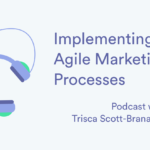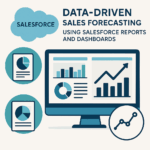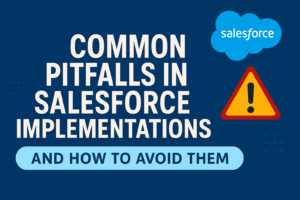BLOG
Implementing Agile Marketing Processes
But what about ‘agile’?
I sat down with Trisca Scott-Branagan to think about what the Agile Manifesto means for different companies, as well as when – and how – to implement different elements for your specific circumstances.
In This Episode
-
What does ‘agile’ really mean?
-
Agile strategies in the marketing world
-
The four elements of the Agile Manifesto
-
The value of stand ups
Listen to the full episode in on iTunes. Or if you prefer to read along, stay right here.
Transcript
Michael Bird
Welcome to the Social Garden podcast, this is Michael Bird with Trisca Scott-Branagan, the former CMO of Deakin University and now Head of Marketing for Institutional at ANZ. Extremely pleased to have Trisca on. Thank you so much for coming in, being a part of it.
Trisca Scott-Branagan
Oh, thanks Michael it’s great to be here. What a gorgeous spot you guys have here. I love it.
Michael Bird
I’ve been following the content and things you’ve been producing for a while now. Obviously you’re kind of the go-to person in the agile marketing space and-.
Trisca Scott-Branagan
How bizarre is that don’t know quite how that worked, but here we are.
Michael Bird
Well people like what you’ve got to say, you know we’re super honored to have you and we’re so grateful that you made the time to come and have a chat with us so we could share that with our listeners, so thank you so much.
Trisca Scott-Branagan
My pleasure. It’s a topic I’m passionate about to be honest, so I’m really pleased to be able to share what I know and share what I don’t know.
Michael Bird
So tell me agile marketing – is it a buzzword? What does it actually mean and what does it look like in practice?
Trisca Scott-Branagan
It is getting a little bit buzzy at the moment, I think everyone’s using that word, ‘agile’ is getting bantered around a lot. It reminds you when you go back a few years ago last year everyone’s talking about strategy, ‘you got to be strategic.’ There’s nothing worse than when you go into a performance review and someone says you need to be strategic and it’s like, but what does that actually mean? And nobody can really define what is meant by being strategic, or very few people I’ve found can. And then once we got through that buzzword the word ‘innovation’ – you’ve got to be innovative – everyone’s got to have an innovation zone or an innovation hub and we got through that phase and then everything has got to be digital and it kind of feels like now the next phase is everything’s got to be agile. I think, let’s be honest everyone’s got a different purpose and a different meaning behind the word agile, but what we’re going to talk about today is actually founded in some agile principles and the Agile Manifesto and there is a discipline around that. And there are people who live their careers and really strong senior careers around bringing an agile way of working into corporate Australia and into agency worlds. So despite how we want to think about the word ‘agile’ and what it means to us personally in our workplace, underpinning all of that is something that is really quite sound, formed a couple of decades or so ago and it’s got something we can learn from.
Michael Bird
We follow an Agile software development process here within the Urban business and I understand what it means from a software development standpoint but super interested to hear about how does it apply in that marketing context.
Trisca Scott-Branagan
To answer that question I’ve got to always go back to a little bit of history lesson because we’ve got to think about what does it actually mean when we go apply agile into the workforce. What was the initial intent of all of this, and the initial intent isn’t about having scrums and stand ups and these sort of methodologies initial intent is about a behavior. It’s about a mindset. It’s about how we organise ourselves to do our work. How we’ve created the app to solve for that. Today is about talking about stand ups and kanbans and scrums but I don’t want to talk necessarily about that. What I want to do is take us back to what does the Agile Manifesto actually say and what can we learn from that. Because there could be better ways of being agile in a work environment that what the methodologies are today.
Michael Bird
Totally.
Trisca Scott-Branagan
So let’s explore that.
Michael Bird
Yeah sounds good to me.
Trisca Scott-Branagan
So there’s four key things in the Agile Manifesto. Let’s get through one of those and pick them apart and if your listeners have got other ideas, all open. Because I think this is where we’ve got to start from. The first thing it talks about is saying let’s put individuals and interactions in front of or ahead of process and tools. So typically when you think about the work life, corporate Australia everything is process driven and it’s for good reason. We live in a regulatory environment. We’ve got stakeholders and shareholders that we need to abide by, we need to demonstrate that we’ve got sound governance in how we do things, but that then sometimes forgets the humans and as individuals we behave in different ways, we have different needs we’re trying to meet and we have different styles. So if we can instead go back and think about what is it that actually drives us as individuals and how do we operate effectively given our own personal style, and if we can embrace and celebrate that then I think a couple of things going to be happening. One is people will be far happier coming to work and when they out they’re probably going to be far more effective because they’re happier.
Michael Bird
Yeah I mean like so much of it is kind of enjoying the experience that is work. I think people gain so much from the process of turning up and doing what they enjoy doing everyday, something they’re good at.
Trisca Scott-Branagan
Yeah. So then the second part of the manifesto says let’s have working software over comprehensive documentation. So this is this concept of minimal viable product. Let’s build small and build out and add to it and over time we’ll get to the end product but we’re not going to go to market first time with the end product we get the iterative.
Michael Bird
It’s so similar to how we look at the Facebook advertising piece and we talk about it not being the big idea, it’s so much of within the digital advertising ecosystem is looking at how many different ways can we position or explain potential product market fit with the consumer and the client. For us it’s kind of minimum trackable products, so we can go out and run 50 different types of ad variants across 100 different market segments and look at how do we kind of do just enough so we can work out if the message resonating with a particular audience. And if that’s the case then we can kind of scale it, but it’s trying to get to that first piece so we can get enough data that makes sense.
Trisca Scott-Branagan
Absolutely. And so the challenge there is that it’s really scary for people to do and have that mindset in corporate Australia where internal stakeholders are going ‘Oh, I need to see that it’s going to be perfect. I need to know there’s no risk in this and I want to see tangible results from the investment.’ But what we’re talking about is that iterative style and taking to our stakeholders something that may not be perfect in the first instance, but what we’re going to do is we’re going to get a lot of that testing going along the way so we’re going to get to an end product that’s going to be far more superior ultimately, but it’s taking that leap of faith initially to change the way in which we work and we think about the work that we deliver. That’s scary for a lot of people. There’s two other things in the manifesto I want to cover off. The third thing the manifesto talks about customer collaboration over contract negotiation. And I think this is something marketers have traditionally done really well. So it’s part of our DNA that before we take anything to market we’ll do market research we’ll get the input of the customer, we’ll get them into focus groups or get them tinkering with things. So this part of the manifesto feels a lot more natural for marketers to do but it does remind us that we should always have a customer in the room whenever we’re designing something, creating something if we get a customer, that’s far more impactful. if we can’t get a customer, then can we get their data, can we get the market research, can we get the data that indicates how the behaviour is going. So putting the customer at the centre is really cool to agile, and again as marketers that’s natural. That’s a natural state for us.
Michael Bird
You know often the sales people are the people that are closest to the customer a lot of ways and if you can integrate that back up the customer journey back towards the marketing team as well. You can enrich those insights from a strategy standpoint.
Trisca Scott-Branagan
Yes, and increasingly as digital marketing is taking the whole market and is getting close to the end of the funnel where sales sits.
Michael Bird
Totally.
Trisca Scott-Branagan
And that integration point is another fascinating conversation we could have. And the fourth and final part of the manifesto is our need to respond to change following a plan. I think this is where corporate Australia struggles sometimes because we – every year we go through a financial planning process, we set up budgets rightly or wrongly that often then is the driver for creating our strategy, it should be the other way around but you know we find it’s a great system of ‘We’ve got a lot of this into the system by a certain date’ so that does force you to think about what your strategy is, and then based on that you sort of lock the numbers in and we get the monthly reports from finance on how the budget spend is going, we get various reports on how the revenue is going according to our plans, but it’s pretty much locked in place as opposed to allowing us to be iterative and yet responding to the changing marketplace and we live in this world of everything’s volatile and there’s uncertainty and the velocity of change is so tremendous that we just can’t afford to set and forget a plan for 12 months. I still believe we have to have a strategy. We need to know what our North Star is we need to know where we’re going but sometimes the plan in which we’re going to get there we need to think more carefully about how we’re going to respond to the changing market around us simply in the interim.
Michael Bird
Our CFO Charlie, the thing he always says to my business partner George and I is that ‘the only thing that we know for sure when we set the budget is that it’s going to be wrong’.
Trisca Scott-Branagan
Right.
Michael Bird
And that we need to have a plan.
Trisca Scott-Branagan
Hopefully directionally correct.
Michael Bird
Directionally correct and then we have a variety of different paths we go down based on different outcomes occurring, but yeah, super interesting to think about and not just kind of in the software development context or marketing but also thinking about that from a business planning and finance and strategy standpoint as well because i think the business world is kind of changing faster and faster and faster and the only thing we know is again that outside of that the budget’s going to be wrong but that ecosystem in which we’re operating is going to change.
Trisca Scott-Branagan
The only constant is change, I’ve been hearing that for a while while but I think what’s different now is that it’s the velocity of that change. So it used to change but now the speed of that is just so much faster than it used to be.
Michael Bird
So where did your experience of agile marketing begin?
Trisca Scott-Branagan
So at Deloitte we were certainly using agile in the way which were addressing some of our customer client prop issues but I wasn’t directly involved in that, but I was highly aware of that and highly aware that that was something that was really coming to the foray. But when I left Deloitte I moved to Deakin and it was a year or so in where we had four significant programs of work we had to take to the market. We started the year with our plan and our plan said that these four significant pieces of work would come into the market at certain times throughout the year and evenly spaced, and you know we could manage the resources accordingly. But with one program of work being delayed another one needing to be brought forward, two months out we looked down the pipeline and realised that these four pieces of work would all be hitting the market within five days. And there was no appetite for change from leadership.
Michael Bird
My goodness.
Trisca Scott-Branagan
There was no extra resources, there was nothing and it was my leadership team that kind of got quite concerned about this and brought it to my attention and said we can’t keep operating the way that we’ve been operating to get these programs of work to market because at that stage we had a really solid process. It was a 160 step process to get an idea to market, you know months but we’re highly collaborative so every man and his dog across the university were involved and knew what was going on was our way of being ‘collaborative’. But it meant that that process was too slow. Agile comes from the bottom up. I think it’s a hard thing to deliver top-down, when the staff bring in agile ways of working it sticks really well and that’s how it started for us with our team at Deakin, a number of people had come from digital agencies where they were applying agile ways of working. And they said let’s apply some of these approaches to these projects. So they cleared out a room of all the furniture, they went to Officeworks and bought a whole heap of Post-it notes; I can see Post-it notes in this room. And then they put up three columns: to do, doing, and done.
And they said at each program of work let’s list all the tasks that we have to do over the next two months and let’s those tasks sometime. So we all know what’s going on. And then every morning at 9:00 o’clock each project team would get into that room and they would talk about how the tasks are going. Has something moved to be done to doing, from doing to done? And when it moved into Done everyone clapped, everyone felt great and people just knew what was going on. The speed improved, transparency improved, collaboration improved, there was all this great stuff that happened. The work was all delivered and delivered beautifully by the way, you know all of those programs over-exceeded by double digits what we were intending them to do which is fantastic. But what happened after we delivered those programs of work is there was this momentum now, the staff said we love this way of working. But then there was equally a group of people that felt really nervous. There were people using a different language for the same thing. There were different levels of confidence in how to run this way of working. And I started to observe that there was not a split but there was just a different pace there, a different energy level that was going on in the team. And so our role as leaders is to set a culture and culture is about the language we use, the way in which we behave and etcetera. And so what I was really focused on then was bringing to the entire division, a consistent way in which we could apply agile ways of working. And I knew with our leadership team as competent, capable as they are, none of us had the experience in introducing agile into a marketing environment. And so we realised that we needed to get help so we went out we scoured the market and we found an agency who does train marketers on agile ways of working they’re based in the States called Agile Agency. Fortunately they travel a lot to Australia. So we got them in and got them to start helping us. And for me and for me, that was just really important to get consistent understanding of what agile is, consistent use of language to describe what we’re doing, how we’re doing it, and then a consistent behaviour around how we interact with each other. And so the journey started. Really proud of how everyone embraced it, loved seeing the energy lift. And so then when I moved across to ANZ almost a year ago it was a no-brainer that at some point in time I wanted to bring the same learnings into the team there. But you’ve got to – look, every situation requires a different solution. So we’re certainly raising some agile ways of working. But it’s a different environment, it’s a different organisation, different requirements so we’re starting at a different place than where we did at Deakin which is fine.
Michael Bird
So what are some things that you do to begin with agile pieces. Internally, for example is you mentioned stand ups before so we do we’ve got each division goes around like everyone kind of stands up every two days and we do ‘what are we doing’ ‘what we were working on today’ ‘what do we hope to have done by the end of the day’ and then ‘what’s keeping us up at night’ and then if the same thing appears twice in two days, like some kind of problem, it’s an easy way to isolate. It’s an easy way for us to isolate and escalate.
Trisca Scott-Branagan
Yeah it’s called blockages. So there’s a huge tool kit in the agile way of working and I really believe that depending on the level of interdependency that you have within your team will depend on what you need to do. And no two teams are the same. And I think that’s a really important thing for people to really get that just because I do a stand up doesn’t mean I’m doing agile. Just because I’m doing agile doesn’t mean I’m doing a stand up. Now the purest agile people who have lived their careers on this will probably squirm when I say that and I really do apologise for that. But that’s just my experience in the marketing world as opposed to a software development agile-pure world. So in my world in both teams I’ve seen two things applied really effectively. But there’s so much more to apply as well. But the number one thing that I do love seeing is those stand ups. For me they don’t have to be daily. Again it depends on your level of interdependency and the pace in which you’re working. Yes it could be a daily stand up. It could be once a week it could be a couple times a week, it really just depends on how frequently you need to connect with each other in the team and that relies on the interdependencies that you have with other people in that team.
Michael Bird
I’ve recently – I’m a pretty big fan of Ray Dalio from Bridgewater Capital who wrote the book Principles, I learned a little tip he had the other day. You know one of the key things that leaders like to train yourself on being the last one to speak and what we found initially is that if a strong voice can say ‘this is the thing that I’m worried about.’ What often happens is that the people will say the same thing to try to you know ‘oh yeah, we’re all focussed on the same thing’.
Trisca Scott-Branagan
But the beautiful thing about a stand up is it normalises the voice. If you’re in any other group situation, the outgoing person, the loud voice is the one that gets heard the most soft quiet person who’s probably got the best idea in the room, you’ll never hear from and the beautiful thing about stand ups is it normalises and equalises the amount of time you hear from each voice. I also love the stand ups because it brings transparency into the group. Everyone knows and understands what other people are working on. No one is sitting there dawdling and not contributing. And so it brings in that understanding of contribution and when you’ve got transparency that helps the team dynamics to build in trust and when you don’t have trust in the group I believe that that’s when you’re really ineffective as a team.
Michael Bird
You know big institutions have obviously massive silos typically, and that can be from a data perspective it can be from a people perspective. A whole range of different things. So how have you seen that overcome?
Trisca Scott-Branagan
Well my experience with that agile marketing is more around bringing agile into the team itself as opposed to transforming the wider organisation, other smarter people are doing that and in transforming the marketing division it means that how we interact at different points in times will change with our stakeholders but it may not be a full overhaul. What works really beautifully is when you do things such as business context setting with stakeholders. So that’s where – often marketers have to catch the strategy that the business throws at them. And it comes half baked or half explained. So business context setting is where as marketers you ask a set of questions that help to uncover what are the business objectives. What are the risks involved. What are the platforms that need to be used to deliver. What are some of the behaviors that we need to see, what does dullness look like. There’s a whole series of questions and it’s a wonderful tool and methodology to help train marketers on how to ask the business certain questions so we have enough information to then roadmap out the work that we’re going to do, and when we go through that exercise with stakeholders it brings a lot stronger collaboration between marketing and the business. And then once we understand the business context that fully, marketers are far better able to roadmap out all the things that we need to do to deliver to the business to be successful. And when we bring the business back in to showcase to them what we’re doing that’s where a lot of the magic happens.
Michael Bird
So I think for a lot of the people that are listening they are potentially at the beginning of the agile journey, something ultimately most businesses are going to have to adopt it to remain competitive. How do you manage that change to go from zero to one.
Trisca Scott-Branagan
Let’s first of all understand why we need to change. And I believe because if we don’t we’re going to kill our people. I don’t ever have a performance review with someone who says I love emails and I love going to meetings. In fact everyone is just crying out ‘how do we reduce emails, how do I how not have so many meetings so I can actually get work done.’ So I think that this is something corporate Australia and the leaders of corporate Australia have to think really seriously about. So we can actually provide a better work environment but it as you say it is going to require change, change in the way in which we operate we think about these things. And change is hard. You know, we’ve all got the scars of change. And it’s often because we start from the wrong place. You know in speaking with copious different providers of who can bring agile into an organisation to a marketing organisation, too many come to me and say the first thing you need to do is restructure your team or bring in a new technology. Now, you know, human capital 101 says that’s not how change happens. Change happens through changing in the culture, changing the language, changing the behavior, changing the attitudes. It’s not through a structure, it’s not through a process, it’s not through technology. And so we need to think about how do we make that change happen. And I’m a really big believer that change can only go as fast as the slowest person. Every person is capable of change. Every person I do believe is capable of applying an agile mentality, an agile way of working. But we’ve got to tool them up and I’ve had instances where you know my staff have been at times really nervous going ‘What are you asking me, what does this look like, I don’t understand.’ But if you can find a really good trainer to train the team that empowers the team with the tools and lets us go off as a team to explore what makes best sense for us to implement, the level of interdependence is absolutely key to this so I’ve seen teams where interdependency between team members is 100 percent – you need to have as much agile processes in there as possible whereas other teams, the independency might be once a month. There’s still some wonderful ways of working that you can bring in for them but they don’t need to use the full scale. So it really is horses for courses.
Michael Bird
Trisca, what’s the one kind of tip you have for organisations regardless where they are on their journey moving towards an agile approach.
Trisca Scott-Branagan
And this is a lesson for me too and I still need to listen to this lesson is to be courageous. This is change. You don’t have all the answers you never will probably. It does require rethinking the way in which you work and operate and when times get stressful we always default to what we know how we used to operate and I do see that in myself at times too. So I think we’ve all just got to be courageous and it takes what does it you know 21 days to form a new habit. So you’ve just got to have that consistency. Be willing to fail. But when you fail just fail really fast you know, pick yourself up apologise dust yourself off and think forward and just keep moving.
Michael Bird
Wise words, thank so much.
Trisca Scott-Branagan
It’s been so much fun Michael. Thank you for having me.
Michael Bird
Thanks so much and tune again soon and we’ll have a new episode coming right up. Cheers.











